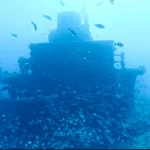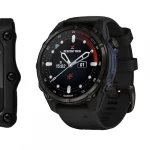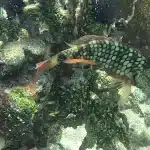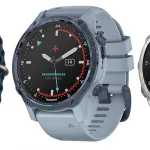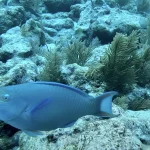Table of Contents
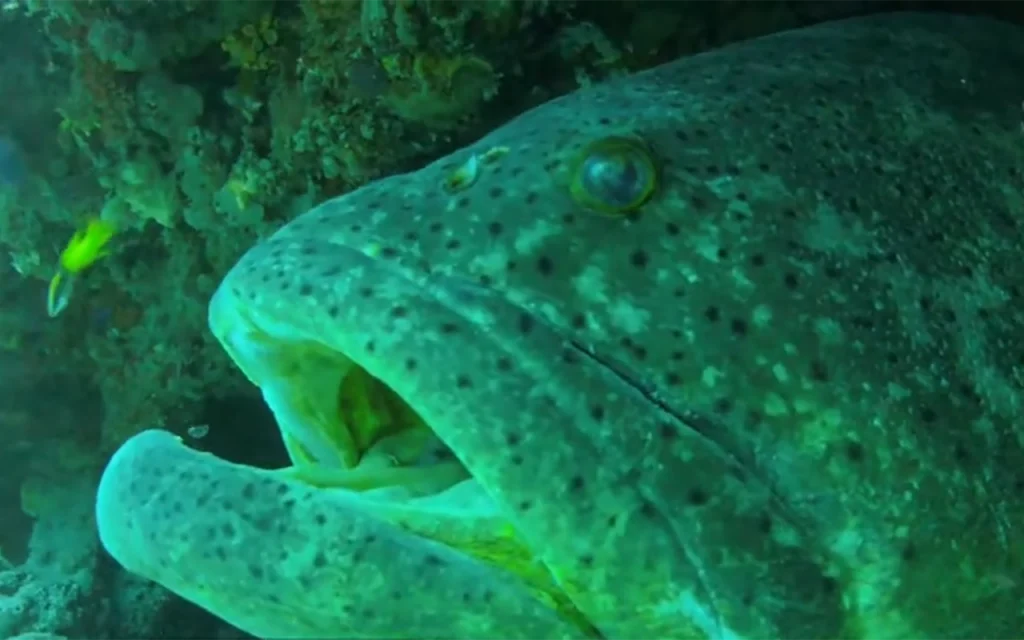
Overall, while the MG-111 wreck itself isn’t particularly impressive visually, divers highly value it for the unique opportunity to observe large numbers of goliath groupers, especially during their spawning season. The experience is often described as extraordinary and memorable.
Article at a Glance
- Location and Depth: The MG-111 wreck is situated off the coast of Jupiter, Florida, at a depth of approximately 60 feet (18 meters), making it accessible for divers of varying experience levels.
- Artificial Reef: Originally a Mississippi river barge, the MG-111 was deliberately sunk in 1995 to create an artificial reef, enhancing marine biodiversity in the area.
- Marine Life Attraction: The wreck is particularly famous for its goliath grouper aggregations, especially during their spawning season from August to October, where divers can see up to 60 of these massive fish at once.
- Diving Experience: While the wreck itself is not visually impressive, it offers unique opportunities for underwater photography and encounters with diverse marine life, including southern stingrays and various reef fish.
- Safety Considerations: Divers should be aware of depth and potential currents, plan their dives carefully, and utilize the buddy system to ensure safety while exploring the wreck.
- Local Dive Shops: Several dive shops in Jupiter, such as Jupiter Scuba Diving, Jupiter Dive Center, and Scuba Works, offer guided trips to the MG-111 wreck and other nearby dive sites.
- Ecological Importance: The MG-111 wreck plays a crucial role in marine conservation, serving as a habitat for various species and contributing to the study of goliath grouper populations.
Shipwreck Location Coordinates and Depth
Depth
Location Coordinates
Coordinates: 26° 58.670′ N, 80° 01.490′ W
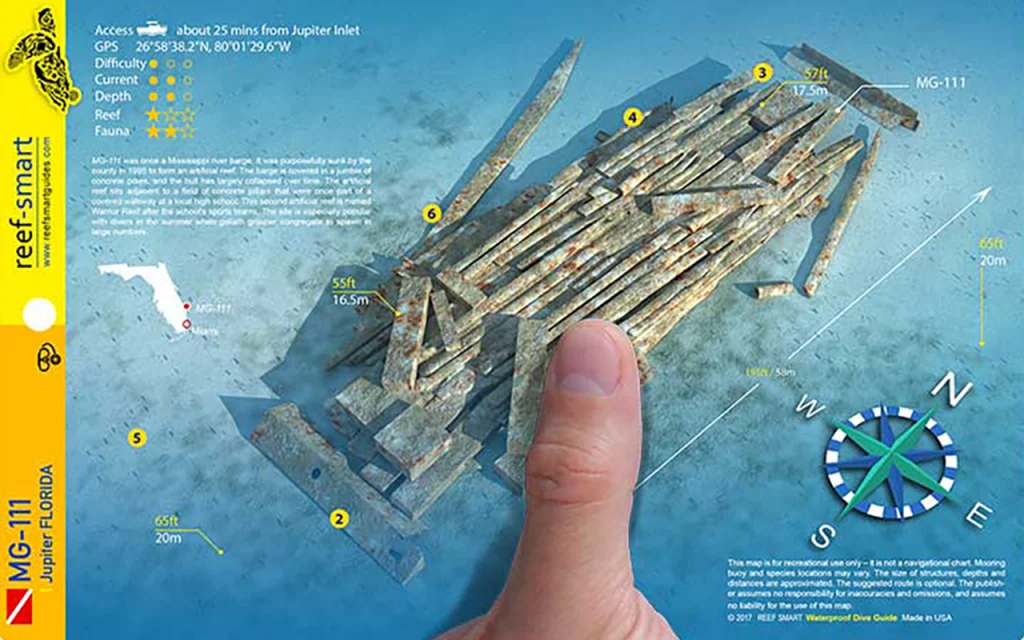
What Do Scuba Divers Say About This Ship
Dive Site Characteristics
- Structure: Described as a “busted up barge” or “broken-up barge wreck”
- Visual Appeal: Not particularly scenic, just a “smooshed hull”
- Depth: Sits at about 60 feet (18 meters) deep in the sand
Marine Life Attractions
- Goliath Groupers: The main attraction, especially during spawning season
- Other Marine Life:
Diving Experience
- Divers recommend staying stationary on the bottom to allow groupers to approach closely
- The site offers opportunities for amazing photos and videos
- Some divers describe it as an “epic dive” and a “vast understatement” to merely call it that
Economic and Conservation Importance
- The seasonal Goliath grouper dives are an important economic driver for local businesses
- Many local dive operators and businesses are advocates for protecting the goliath groupers
Best Time to Dive
- August to early October is considered the prime time for observing large aggregations of goliath groupers
What Kind of Marine Life Can Be Found on The Ship
Goliath Groupers
- The main attraction, especially during spawning season (August to early October)
- Divers report seeing 40-60 goliath groupers in a single dive
- These fish can be as large as “Mini Coopers”
- They make booming noises underwater, described as sounding like “submerged bass drums”
Other Fish Species
Rays and Sharks
- Southern stingrays have been observed gliding overhead
- Sharks may be present, especially during winter months (though this is more common at other nearby wrecks)
Sea Turtles
Seasonal Variations
- The wreck becomes an important aggregation site for goliath groupers during spawning season (August and September)
- Larger numbers of fish, particularly sharks, appear in winter months (though this is noted for nearby wrecks and may apply to MG-111 as well)
Key Information
| Category | Information |
|---|---|
| Wreck Name | MG-111 |
| Location | Jupiter, Florida |
| Coordinates | 26° 58.670′ N, 80° 01.490′ W |
| Depth | 60 feet (18 meters) |
| Type | Mississippi river barge deliberately sunk as an artificial reef |
| Sinking Date | September 28, 1995 |
| Structure | Broken-up barge wreck covered in concrete poles used for street lighting |
| Marine Life | – Goliath groupers (especially during spawning season from August to early October) – Southern stingrays – Loggerhead and green sea turtles – Various reef fish |
| Unique Features | – Attracts large aggregations of goliath groupers (40-60 fish per dive during spawning season) – Groupers make booming noises underwater, described as “submerged bass drums” – Adjacent to the wreck are random pillars from the old Jupiter high school, creating additional habitats |
| Best Time to Dive | August to early October (goliath grouper spawning season) |
| Diving Experience | – Not particularly scenic, just a “smooshed hull” – Offers amazing opportunities for photos and videos – Divers recommend staying stationary on the bottom to allow groupers to approach closely |
| Importance | – Crucial site for studying goliath grouper behavior and population – Seasonal goliath grouper dives are an important economic driver for local businesses – Many local dive operators and businesses are advocates for protecting the goliath groupers |
What Makes The MG-111 Wreck a Unique Diving Experience
Goliath Grouper Aggregation
- The wreck is famous for attracting large numbers of goliath groupers, especially during spawning season (August to early October)
- Divers report seeing 40-60 goliath groupers in a single dive
- These massive fish can be as large as “Mini Coopers”
Underwater Soundscape
Marine Life Diversity
- Besides goliath groupers, divers can observe:
Artificial Reef Structure
- The wreck is a Mississippi river barge deliberately sunk as an artificial reef in 1995
- It’s covered in a jumbled pile of concrete poles once used for street lighting
- Adjacent to the wreck are random pillars from the old Jupiter high school, creating unique habitats for marine life
Diving Conditions
- Located at a depth of about 60 feet (18 meters), making it accessible for many divers
- Offers opportunities for amazing underwater photography and videography
Scientific Importance
- The site is one of about 20 identified goliath grouper spawning sites off Florida’s coasts
- It plays a crucial role in the conservation and study of this endangered species
How Does The MG-111 Compare to Other Shipwrecks in Florida
Historical Significance
- Unlike many historic shipwrecks in Florida waters, the MG-111 is a relatively modern artificial reef
- It lacks the historical importance of wrecks like the 1559 Emanuel Point Wreck or the 1622 Atocha, which offer insights into colonial-era maritime history
Structure and Appearance
- The MG-111 is described as a “busted up barge” or “broken-up barge wreck”
- It’s less visually impressive compared to more intact historical wrecks
- Many Florida wrecks, especially those from earlier centuries, offer more interesting structural remains
Marine Life Focus
- The MG-111’s primary attraction is its marine life, particularly the goliath grouper aggregations
- While many Florida wrecks host diverse marine life, the MG-111 is specifically known for its role in goliath grouper spawning
Depth and Accessibility
- At 60 feet deep, the MG-111 is more accessible than some deeper wrecks
- However, many of Florida’s artificial reefs and deliberate sinkings are at similar or shallower depths
Treasure and Artifacts
- Unlike famous treasure wrecks like the Atocha or the 1733 Spanish Treasure Fleet wrecks, the MG-111 doesn’t offer historical artifacts or treasure
- Its value lies in ecological importance rather than historical or material wealth
Scientific and Conservation Importance
- The MG-111 serves as a crucial site for studying goliath grouper behavior and population
- This ecological focus sets it apart from many other wrecks that are valued primarily for historical or recreational reasons
What is The Full History of This Ship
Known History
- Origin: The MG-111 was originally a Mississippi river barge
- Purpose: It was deliberately sunk as an artificial reef
- Sinking Date: September 28, 1995
Current State
- Location: Off the coast of Jupiter, Florida
- Depth: Rests in approximately 60 feet (18 meters) of water
- Structure: Described as a “busted up barge” or “broken-up barge wreck”
- Additional Features: Covered in a jumbled pile of concrete poles once used for street lighting
Ecological Significance
- Serves as an important aggregation site for goliath groupers, especially during spawning season (August to early October)
- Attracts diverse marine life including southern stingrays, sea turtles, and various reef fish
Diving Experience
- Popular among divers, particularly for observing goliath groupers
- Adjacent to the wreck are random pillars from the old Jupiter high school, creating additional habitats for marine life
What Historical Features Can Still Be Identified on The MG-111 Wreck
Remnants of the Barge Structure
- The wreck is described as a “busted up barge” or “broken-up barge wreck”
- It appears as a large rectangular area filled with steel beams and debris
Concrete Poles
- The barge is covered in a jumbled pile of concrete poles
- These poles were once used for street lighting before being repurposed for the artificial reef
Limited Structural Integrity
- The search results indicate that the wreck is no longer an identifiable barge structure
- It’s mentioned that “there was a time – back when it was still an identifiable barge – that it was an interesting wreck to dive”
Adjacent Artificial Reef Elements
- While not part of the original MG-111 structure, there are random pillars from the old Jupiter high school nearby
- These pillars were intentionally placed to create additional artificial reef habitat
Depth and Location
- The wreck rests at approximately 60 feet (18 meters) of water
- It’s located off the coast of Jupiter, Florida
What Safety Measures Are in Place for Divers Visiting the MG-111
- Depth awareness: The MG-111 rests at approximately 60 feet (18 meters) deep.Divers should be certified for and comfortable diving at this depth.
- Dive planning: It’s recommended to use the Reef Smart Guide for MG-111 when planning dives to this site.
- Marine life awareness: The wreck attracts diverse marine life, including large goliath groupers during spawning season (August to October). Divers should maintain a safe distance from marine life and avoid disturbing the ecosystem.
- Structure hazards: The wreck is described as a “large rectangular area filled with steel beams and debris”. Divers should be cautious of sharp edges or unstable structures.
- Current awareness: While not explicitly mentioned for MG-111, many wrecks in Florida waters can experience currents. Divers should be prepared for potential current conditions.
- Buddy system: As with all dives, using the buddy system is crucial for safety.
- Proper equipment: Ensure all diving equipment is in good condition and suitable for the dive conditions.
- Local regulations: Divers should adhere to any local diving regulations or guidelines specific to the Jupiter, Florida area.
- Seasonal considerations: Be aware that marine life populations, especially goliath groupers, vary seasonally.
- Dive operator selection: Choose reputable local dive operators familiar with the site for guided dives.
Dive Shops That Provide Diving Trips to This Shipwreck
- Jupiter Scuba Diving
- Address: 1111 Love St, Jupiter, FL 33477
- Phone: (855) 575-3483
- Website: https://jupiterscubadiving.com
- Jupiter Dive Center
- Address: 201N US-1 E2, Jupiter, FL 33477
- Phone: (561) 745-7807
- Website: https://jupiterdivecenter.com
- Scuba Works
- Address: 351 South US 1, #103, Jupiter, FL 33477
- Phone: (561) 575-3483
- Website: https://www.scubaworks.com
Central Florida Wrecks
- SS Breconshire
- Georges Valentine
- Hog Heaven
- Urca De Lima
- USS Rankin
- Ana Cecilia
- United Caribbean
- USS Mindanao
- The Laertes
- Berry Patch Tug Wreck
- The Liberty Ship
- The Ana Cecilia
- The Cities Service Empire
- USS Accokeek
- The Tortuga Wreck
- Princess Ann Wreck (Palm Beach)
- Okinawa Wreck (Pompano Beach)
- MG-111 Wreck (Jupiter)
- Lady Luck Wreck (Pompano Beach)
- Rodeo 25 Wreck (Pompano Beach)
- Lowrance Wreck (Pompano Beach)
- RSB-1 Wreck (Deerfield Beach)
- Rebel Wreck (Deerfield Beach)
- Noulla Express Wreck (Fort Lauderdale)
- Sucre Wreck (Fort Lauderdale)
- Captain Tony Wreck (Pompano Beach)
- Peter McAllister Wreck (Pompano Beach)
- Guy Harvey Wreck (Fort Lauderdale)
- Quallman Tugs Wreck (Pompano Beach)
- Miller Lite Wreck (Pompano Beach)

